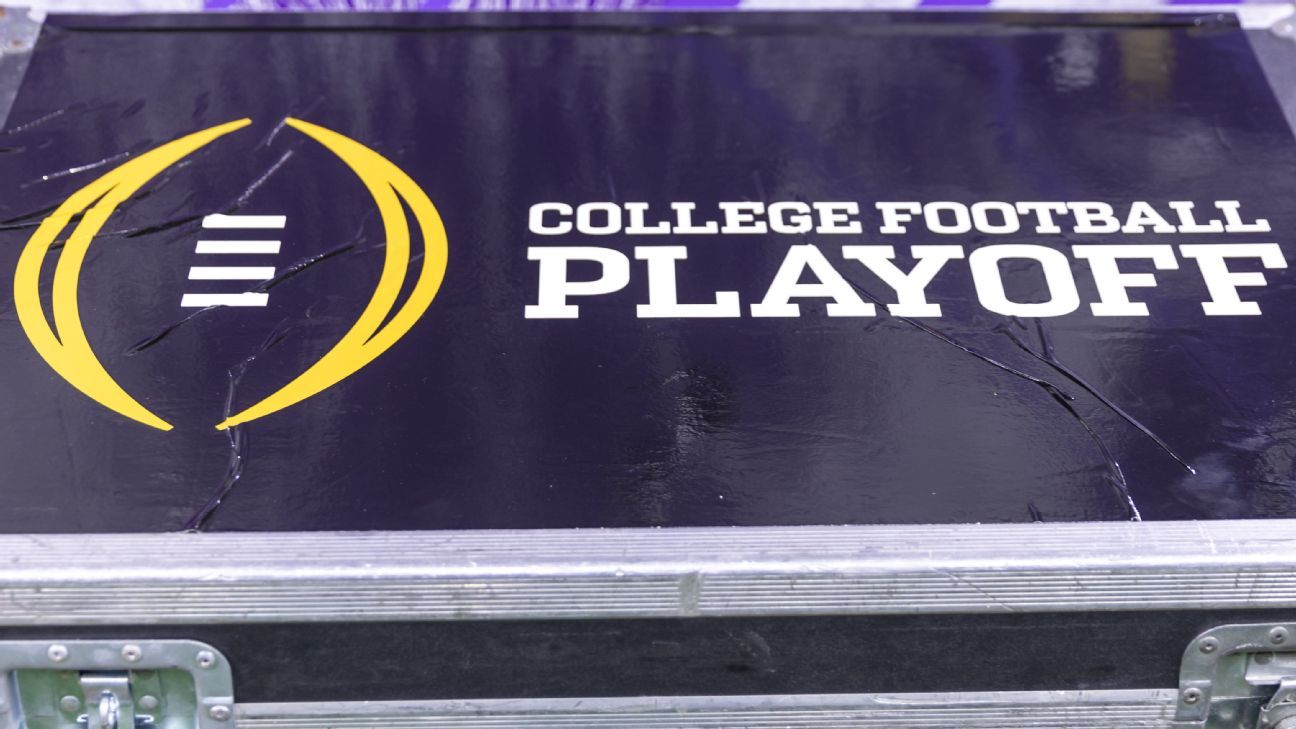The College Football Playoff is on the brink of moving one important step closer to an expected 14-team playoff that would begin in 2026, as the 10 FBS conferences and Notre Dame are pushing to meet a Friday deadline to agree to the next contract and inform the CFP if they will participate in the playoff in 2026 and beyond.
Multiple sources told ESPN on Thursday that each league and Notre Dame are expected to sign a legal agreement by midday on Friday. Starting in 2026, the new agreement will codify the further financial separation of the expanded Big Ten and SEC from everyone else in college athletics. The Group of 5 commissioners have been in a difficult position without any negotiating power, but sources indicate they won’t choose being excluded from the CFP.
“It’s like the Godfather’s offer you can’t refuse,” one Group of 5 athletic director told ESPN on Thursday.
The financial distribution for the expected 14-team playoff will look radically different that its playoff predecessor. On an annual basis, for example, the Big Ten and SEC will be making more than $21 million per school, a number that’s up from the nearly $5.5 million the Power Five leagues are currently being paid.
In the ACC, the schools will get more than $13 million annually and the Big 12 will get more than $12 million per school. Notre Dame is expected to get more than $12 million as well, and sources tell ESPN there will be a financial incentive for any independent team that reaches the CFP. (There will no longer be a participation bonus for any of the other leagues – a detail that was frustrating to some leaders in the Group of 5.)
The Group of Five schools revenue will increase to just under $1.8 million from the current $1.5 million. According to multiple sources, American Athletic Conference commissioner Mike Aresco has been the most outspoken critic of the plan, but hasn’t been able to garner enough support from other commissioners to fight it.
Sources caution that the numbers are tricky to compare, as there’s uncertainty about the fine points of expenses and distribution in the next iteration. But in the general ballpark, those will be the annual distributions.
It’s important to remember that these numbers are indicative of the changing landscape, where the money from the historic bowl relationships is now re-positioned through the CFP. That’s a different scenario for Notre Dame, which did not have a traditional bowl payout.
Because the Big Ten and SEC have a combined 34 teams and the most CFP representatives, they have also had the most leverage in the discussions. SEC commissioner Greg Sankey, who met with the conference presidents and chancellors this week, has said his conference has delivered 40% of the teams in the playoff.
That’s also the reason for the ACC’s slight edge in revenue over the Big 12, as the ACC has had eight CFP semifinalists (counting Notre Dame’s appearance in 2020 as a league member), while TCU is the only Big 12 team to reach a CFP semifinal who will be in the Big 12 next season. Big 12 member Cincinnati earned a CFP berth in the 2020 season when it was a member of the American Athletic Conference.
The vast disparity in revenue from top to bottom has already elicited discontent and pushback from schools outside of the Big Ten and SEC. To help alleviate some of those concerns, sources said a “look-in” clause for 2028 has been added to give the commissioners and Notre Dame leadership a chance to reevaluate the contractual agreements based on how every league has performed to that point. There’s also a clause that permits that timeline to be accelerated if there is “material realignment” again.
If the 10 FBS conferences and Notre Dame agree to move forward together as expected, the next step will be for them to complete the long-awaited TV deal with ESPN. Starting in 2026, ESPN is poised to spend an average of nearly $1.3 billion on the playoff for six seasons. The deal would include the final two years on the current CFP contract, plus a new six-year agreement for the next iteration of the playoff, sources told ESPN.
The CFP will unveil a 12-team format for the 2024 and 2025 seasons. The details of what’s expected to be a 14-team field won’t be determined until after the TV deal is done.
The format of how that field shapes up is still to be determined. The format for the next two years will be five automatic qualifiers from the five highest ranked conference champions and seven at-large bids. There’s expected to be ongoing discussion about the format for what’s expected to be a 14-team playoff.
The timeline of those crucial decisions is undetermined, as it’s not known whether college sports leaders will let one edition of the 12-team playoff play out or decide in the upcoming months.
This week’s internal deadline was an unusual path forward for an organization that has historically relied on unanimity to proceed forward with any major changes to the CFP — not only from the 10 FBS commissioners, but also their respective presidents and chancellors who represent them on the CFP board of managers. Because there will be a new contract in 2026, though, decisions that are being made now for the future are based on whether their desire to participate in it outweighs any perceived unfairness in the process or format.
The post Sources: CFP closer to expected 14-team field appeared first on Patabook Sports.


